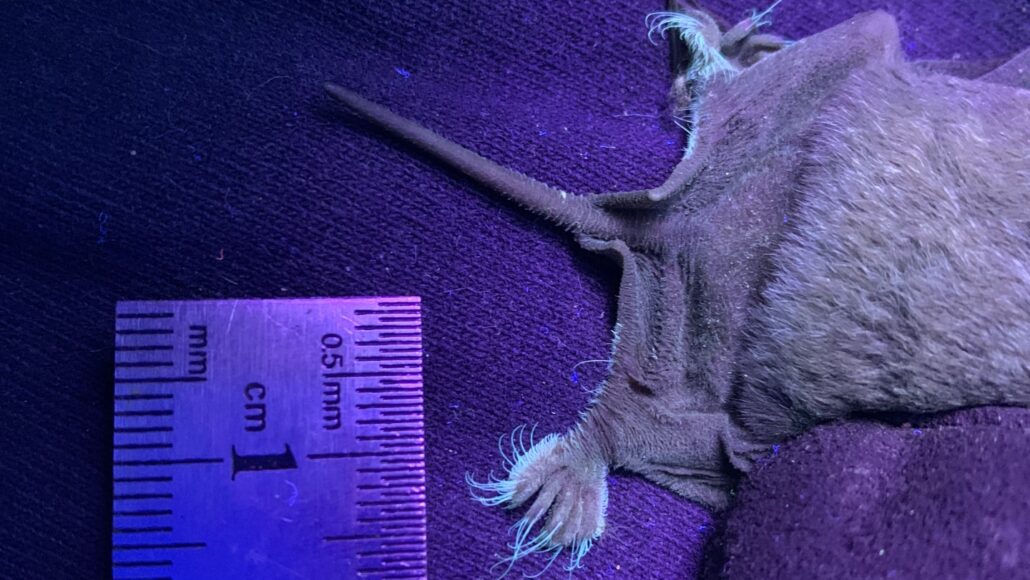Questions for ‘Weird? These bat toes can glow greenish-blue’

Under ultraviolet light, bristles on the toes of this Mexican free-tailed bat glow a brilliant blue-green.
F. Gual-Suárez
To accompany ‘Weird? These bat toes can glow greenish-blue’
SCIENCE
Before Reading:
- Describe a time in your life when you failed at something but learned something or gained something unexpected from that failure.
- What does it mean for a living thing to be photoluminescent? Give two examples of living things that can be photoluminescent. For one of these, speculate on a possible reason that having such an ability might be useful to the organism.
During Reading:
- What is biologist Fernando Gual-Suárez talking about when he acknowledges that the team’s initial experiment investigating the bats “failed”?
- How did this failure lead to finding something they might not otherwise have seen?
- What are the common and scientific names of the bat recently discovered to have photoluminescent toes?
- These photoluminescent bats do not make light. (For example, a light bulb produces light from electrical energy.) Describe the mechanism by which these bats emit the observed light.
- What data led scientists to claim that all members of this species had glow-in-the-dark toes?
- Describe the differences in photoluminescent properties of the preserved museum specimens as compared to the live bats.
- How did researchers explain these differences between the preserved specimens and the live bats?
- Give one example of a non-mammal that shares a phenomenon similar to the bats in this article.
- Describe the shape and location of the unusual bristles that researchers believe to be responsible for the bat’s photoluminescence.
After Reading:
- What does this research story tell us about the value of failures in science? What is one takeaway?
- Researchers want to know why these bats have photoluminescent toes. To answer that, they ask an important question: Can the bats, themselves, even see the emitted light? Consider how answers to this question might help uncover the purpose of the bat’s photoluminescence. If future studies indicate that the bats can see the emitted light, what is one possible way this phenomenon might help them? If scientists find that the bats cannot see the emitted light, what might be a possible function of it?